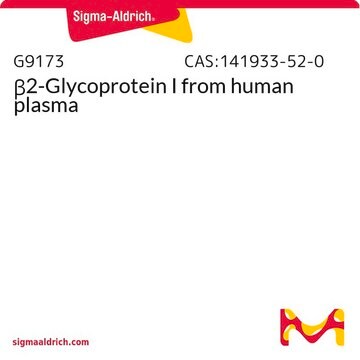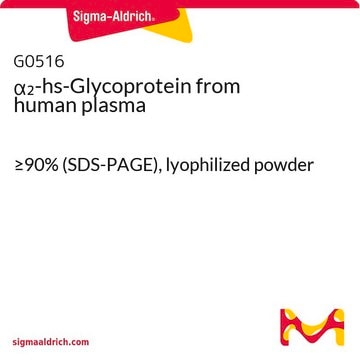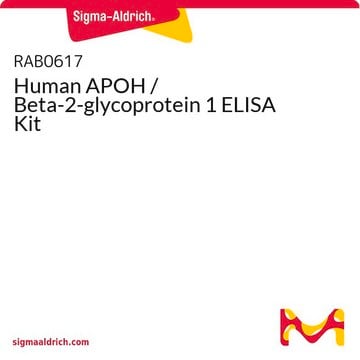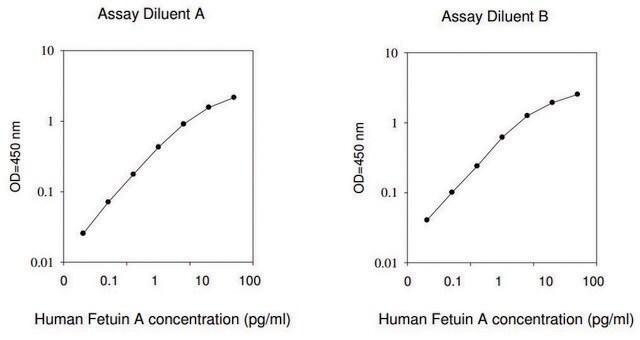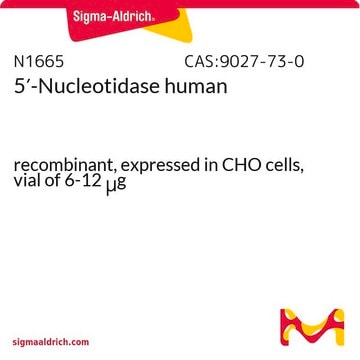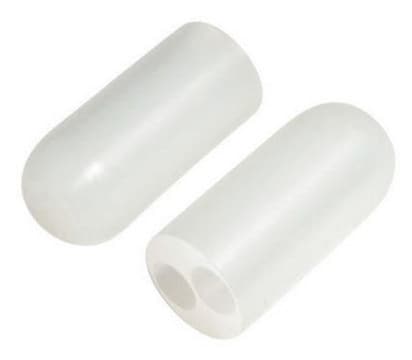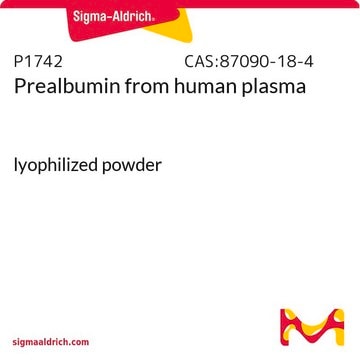362225
β₂-Glycoprotein 1, Human Plasma
Sinónimos:
Apolipoprotein H
Iniciar sesiónpara Ver la Fijación de precios por contrato y de la organización
About This Item
UNSPSC Code:
12352202
NACRES:
NA.25
Productos recomendados
assay
≥95% (SDS-PAGE)
Quality Level
form
solid
manufacturer/tradename
Calbiochem®
storage condition
OK to freeze
concentration
≥2 PEU/mg solid (antigen content)
shipped in
ambient
storage temp.
2-8°C
Categorías relacionadas
General description
Native β2-glycoprotein 1 from human plasma. A carbohydrate-rich plasma protein that is a constituent of several lipoprotein particles. Possesses sialylated and galactosylated bi- and triantennary oligosaccharides.
Warning
Toxicity: Standard Handling (A)
Unit Definition
One PEU is defined as the amount of β₂-glycoprotein 1 present in 1 ml of normal plasma (~200 µg).
Physical form
Lyophilized from 200 mM glycine, 150 mM NaCl, pH 7.5.
Preparation Note
Prepared from plasma that has been shown by certified tests to be negative for HBsAg and for antibodies to HIV and HCV.
Reconstitution
Following reconstitution, store in the refrigerator (4°C). Stock solutions are stable for 1 month at 4°C or for up to 4 h at 20°C.
Reconstitute with 1 ml of distilled H₂O.
Other Notes
Wang, S.X., et al. 1999. Biochemistry 38, 9477.
Cassader, M., et al. 1994. Artherosclerosis 110, 45.
Walsh, M.T., et al. 1990. Biochem. 29, 6250.
Cassader, M., et al. 1994. Artherosclerosis 110, 45.
Walsh, M.T., et al. 1990. Biochem. 29, 6250.
Legal Information
CALBIOCHEM is a registered trademark of Merck KGaA, Darmstadt, Germany
Storage Class
11 - Combustible Solids
wgk_germany
WGK 1
flash_point_f
Not applicable
flash_point_c
Not applicable
Certificados de análisis (COA)
Busque Certificados de análisis (COA) introduciendo el número de lote del producto. Los números de lote se encuentran en la etiqueta del producto después de las palabras «Lot» o «Batch»
¿Ya tiene este producto?
Encuentre la documentación para los productos que ha comprado recientemente en la Biblioteca de documentos.
Xue Jing et al.
Oncology reports, 40(2), 1035-1045 (2018-06-20)
Chronic hepatitis B virus (HBV) infection remains one of the leading causes of hepatocellular carcinoma (HCC) globally. However, the mechanism underlying the mediation by HBV surface proteins (HBsAgs) of the early steps in the virus life cycle and following HCC development
Nuestro equipo de científicos tiene experiencia en todas las áreas de investigación: Ciencias de la vida, Ciencia de los materiales, Síntesis química, Cromatografía, Analítica y muchas otras.
Póngase en contacto con el Servicio técnico